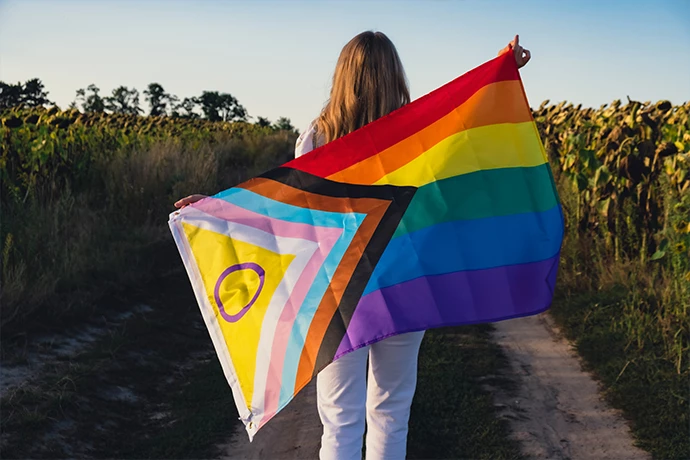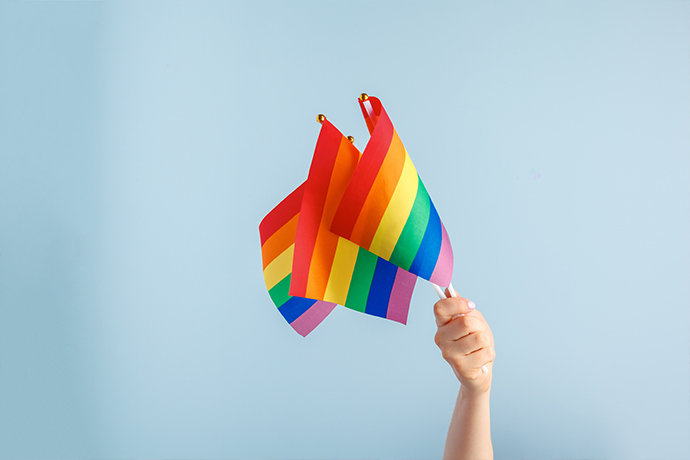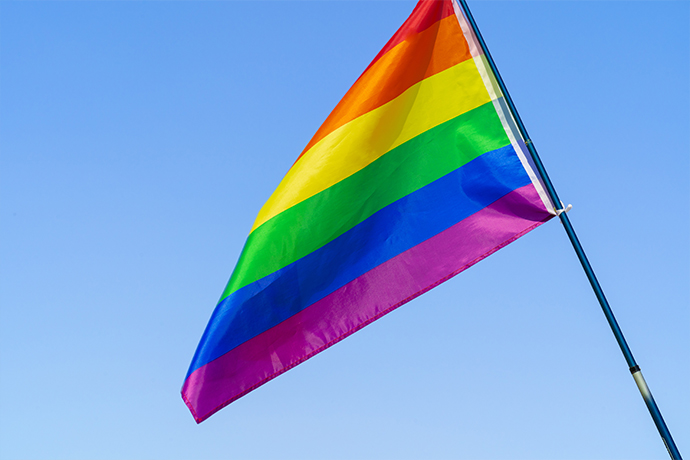 SPEAKERS
SPEAKERS
 TOPICS
TOPICS
Ever heard of the Pride Community or seen events adorned with the LGBTQ Flag? Curious about the meaning behind those colorful flags? Learn all about LGBTQ flags and their significance.

In 2024, there would be nobody who hasn't heard from the movement called Pride Community? Or have you ever been chanced to walk past an event where the LGBTQ Flag was used to decorate the skies? Maybe you came across something related to pride flags online and since then you have been so curious to know the meaning behind those beautiful multi-color flags.
This blog aims to give you an in-depth understanding of everything you need to know about the LGBTQ flags and beyond.
Presently, we are in a world that keeps celebrating diversity and inclusivity through various events and media all in the quest to give liberty to everyone who lives on the planet irrespective of their sexual orientation. An example of such media is the rainbow flag which has become a powerful representation of struggle and resilience for the pride community.
That community incorporates lesbians, gays, bisexuals, transgenders, and queers (LGBTQ). With its lively color scheme, the rainbow flag has been widely associated with the movement for acceptance and equality.
But what exactly is the meaning of the LGBT Flag? The pride flag goes beyond its striking appearance; it holds deep layers of meaning that reflect many-sided experiences and identities within the LGBT community.

The LGBTQ Flag was not just formed, its creation was a result of some series of events that occurred a long time ago. These are not just ordinary events. They are very complex ones that will be spoken of by generations to come.
Here, we will explain the circumstances that surround the struggle, campaign, and triumph of the LGBTQ community.
The origin of the LGBT flag can be dated back to 1978, when Harvey Milk, the first openly homosexual elected official in California, asked Gilbert Baker, an artist and activist, to design the iconic rainbow flag. This flag creation was inspired by the growing spirit of liberation, and it originally featured eight colors (red, orange, yellow, green, turquoise, indigo, pink, and violet), each representing a different aspect of the LGBT community.
Although the design was later reduced to a six-color rainbow flag due to the availability of fabric, people are probably not familiar with the six-color type.
The six colors thus signify:
Over the years, there have been a lot of changes in the LGBTQ flag, and these changes are a result of the community struggling for equality and recognition. Today, the LGBTQ community has several flag variations, each with its special meaning and symbol.
Let's start with the transgender pride flag, which was designed by Monica Helms, a transgender activist, in 1999. This flag comprises different colors, including light blue, pink, and white stripes, which together represent the transgender community's progress toward visibility, acceptance, and freedom.
In addition, a progress pride flag was created by Daniel Quasar in 2018, and it is a variant of the normal rainbow flag. It has black and brown stripes on it to symbolize LGBTQ people of color. Also, it includes light blue, pink, and white stripes that stand for transgender people. It was designed inclusively to elevate and recognize the voices of the LGBTQ community's voiceless members.
Since the invention of the LGBTQ flag, it has continued to serve as a symbol of hope and unity for people who have historically gone through derogation and oppression because of their sexual orientation and gender identity. It provides a visual reminder of the continuous fight for justice and equality, this means that it keeps burning up the spirit of activism and advocacy among LGBTQ members globally.
The LGBT flag stands as a symbol of visibility and representation for the community as it helps to challenge societal norms and promote greater acceptance and understanding of various identities. Through it, the LGBTQ community regained their space in a world that has frequently attempted to oppress them by proudly claiming their presence and the right to live no matter what may be.

It is important to note that the LGBTQ flag is not without controversy or criticism.It has faced and still faces a lot of challenges. As a matter of fact, some individuals within the community have shown their concern about the flag’s commercial use and commodification, saying that its broad acceptance by businesses and mainstream society has degraded its radical origins. Meanwhile, some parties have called for greater intersectionality within the LGBTQ movement, advocating for the integration of voices and experiences that have been historically marginalized, such as transgender people of color and individuals with disabilities.
With all these challenges faced by the LGBTQ flag, it is worth to note that it still remains a powerful symbol of resilience, pride, and resistance. It continues to serve as a testament to the strength and courage of LGBTQ individuals who have devoted their lives to defending their rights and freedoms. Without any doubt, it will continue to evolve with society, reflecting the dynamic nature of gender and sexual identity.
The LGBTQ flag has many variations, all of which evolved from the original rainbow flag over the years. But, regardless of these variations, all LGBT flags are far more than just a colorful banner; they serve as a symbol of hope, unity, and liberation for the LGBT community.
After all, we as humans have inside our nature the ability to adapt, evolve, and expand into greater diversity.